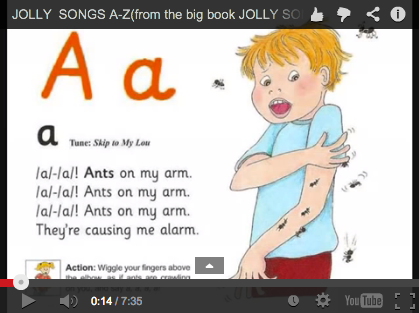Phonics
What is Phonics?
What is Phonics?
Phonics is a strategy used in primary schools to assist with reading and writing in the early years of education. The strategy is predominantly used in P1 and P2 (Reception and Year 1). Using phonics, teachers develop learners’ phonemic understanding and recognition and improve their ability to identify phonemes and patterns of sounds within words. The goal is for the learners to recognise patterns and apply this knowledge to assist reading and spelling by blending sounds together. Other terms for phonics are: Linguistic phonics, synthetic phonics and jolly phonics. Phonics is the system of relationships between letters and sounds in a language.
Why is phonics important?
Quite simply, learning phonics will assist your children with their word decoding and spelling. It equips your child will the ability to ‘have a go’ at reading and spelling unfamiliar words by stretching and spelling words using individual sounds and clusters. Learning the letters doesn’t give any hint to the way in which the word is spoken. Recognising phonemes will help your child know which letters to use as he/she develop their voice as a reader and writer. ‘Having a go’ at reading and writing using sounds helps your child become a more independent learner.
What is a Phoneme?
A phoneme is the smallest sound unit in language I.e. a single sound but not limited to a single letter. There are 44 Phonemes in the English language and they are separated into vowel and consonant phonemes. It is important to understand that some of the phonemes will sound similar and some of the phonemes will make more that one sound in different words e.g. thin and then – the th makes a different sound in each word.
Vowel Phonemes:
PHONEME EXAMPLES
a cat
e peg bread
i pig wanted
o log want
u plug love
ae pain day gate station
ee sweet heat thief these
ie tried light my shine
oe road blow bone cold
ue moon blue grew tune
oo look would put
ar cart fast (regional)
ur burn first term heard
or torn door warn (regional)
au haul law call
er wooden circus sister
ow down shout
oi coin boy
air stairs bear hare
ear fear beer here
Consonant Phonemes:
PHONEME EXAMPLES
b baby
d dog
f field photo
g game
h hat
j judge giant barge
k cook quick mix
l lamb
m monkey comb
n nut knife gnat
p paper
r rabbit wrong
s sun mouse city science
t tap
v van
w was
wh where what when why
y yes you
z zebra please is
th then
th thin
ch chip watch
sh ship mission chef
zh treasure
ng ring sink
Source: http://www.lancsngfl.ac.uk
Key words
Phoneme – The smallest unit of spoken sound. There are approximately 44 phonemes in English (it depends on different accents). Phonemes can be put together to make words.
Grapheme – A way of writing down a phoneme. Graphemes can be made up from 1 letter e.g. p, 2 letters e.g. sh, 3 letters e.g. tch or 4 letters e.g ough.
Digraph – A grapheme containing two letters that makes just one sound (phoneme).
Trigraph – A grapheme containing three letters that makes just one sound (phoneme).
Blending – Reading phonemes in order to sound out a word.
What is the difference between a grapheme and phoneme?
The only difference between a phoneme and grapheme is one is the spoken form and the other is the written from

